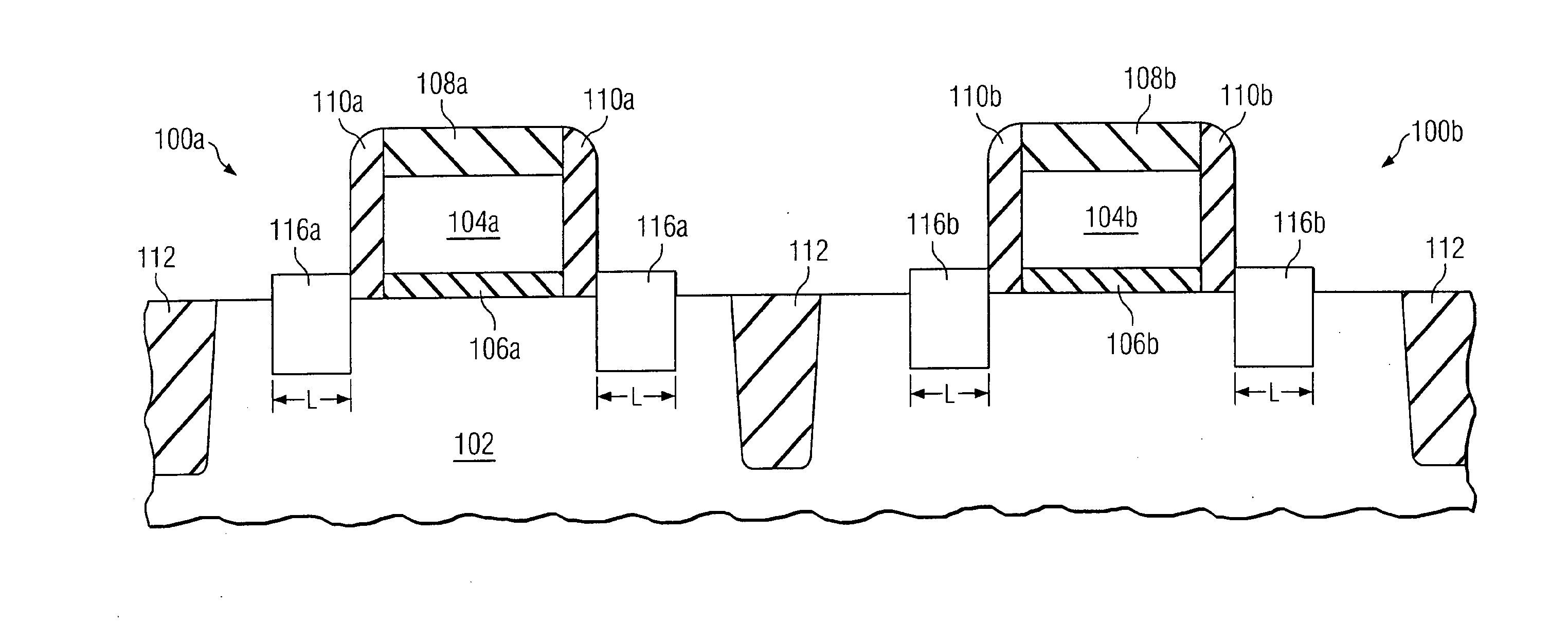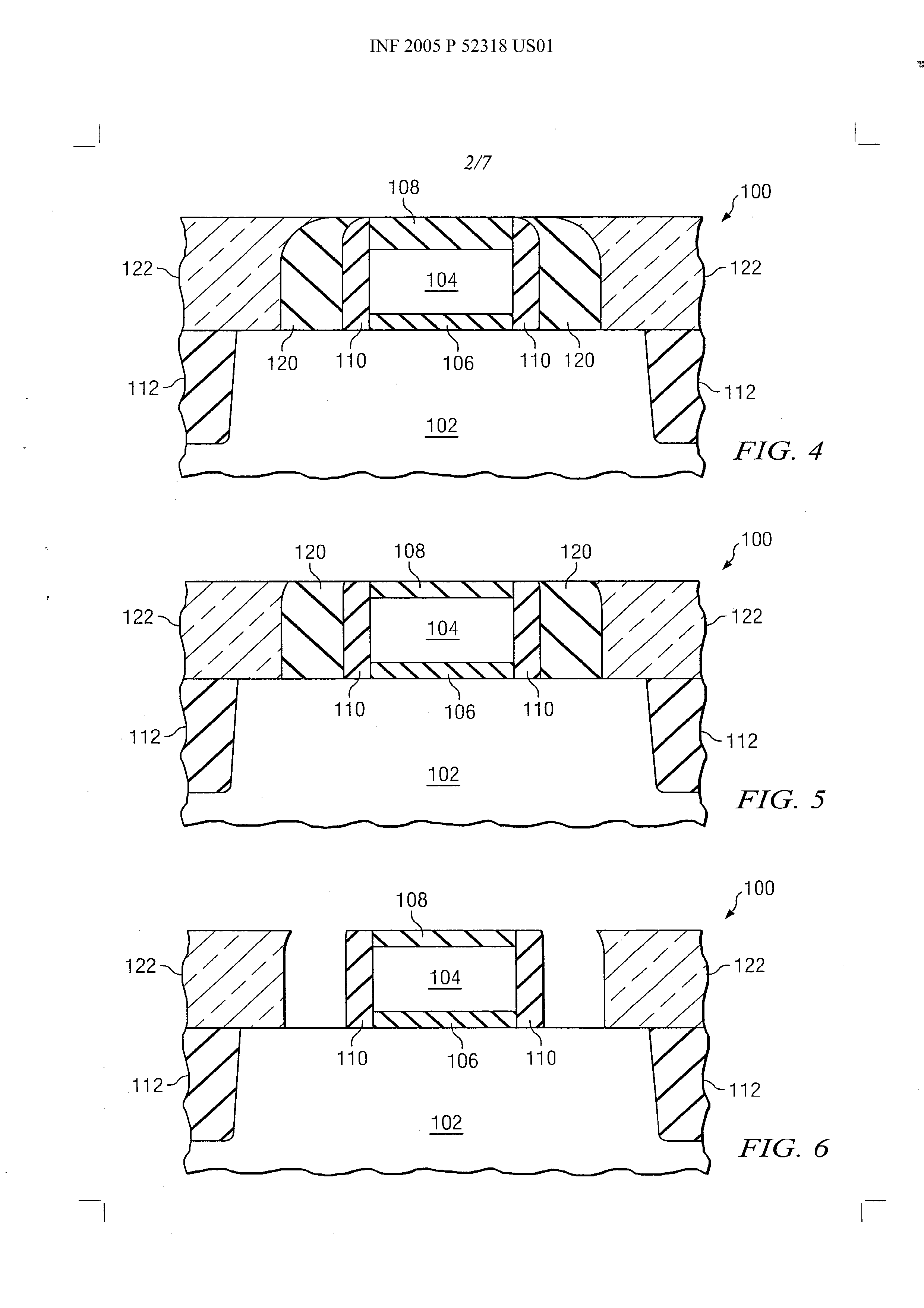Strained Semiconductor Device and Method of Making the Same
a technology of semiconductor devices and strainers, applied in the direction of semiconductor devices, electrical devices, transistors, etc., can solve the problem that the effect of mechanical stress on the performance of transistors is not guaranteed for all transistors, and achieve the effect of improving transistor performance and carrier mobilities
- Summary
- Abstract
- Description
- Claims
- Application Information
AI Technical Summary
Benefits of technology
Problems solved by technology
Method used
Image
Examples
first embodiment
A first embodiment process to fabricate the transistor of FIG. 1 will be described with respect to FIGS. 2-10. This process flow describes preferred manufacturing processes and techniques. As will be recognized by one of skill in the art, a number of variations are possible.
Referring first to FIG. 2, a transistor has been partially fabricated. In particular, STI regions 112 and a gate stack, which includes gate dielectric 106, gate electrode 104, and hard mask layer 108, have been formed using conventional processes. Sidewall spacers 110 have also been formed along sidewalls of the gate electrode 104. These spacers can be formed by conformally depositing an insulating material and anisotropically etching the material. The thickness of the spacer can be determined by the desired dimension of the source / drain extension (or lightly doped source / drain region), which is not explicitly illustrated.
Turning now to FIG. 3, sacrificial sidewall spacers 120 are formed adjacent the sidewall spa...
PUM
 Login to View More
Login to View More Abstract
Description
Claims
Application Information
 Login to View More
Login to View More - R&D
- Intellectual Property
- Life Sciences
- Materials
- Tech Scout
- Unparalleled Data Quality
- Higher Quality Content
- 60% Fewer Hallucinations
Browse by: Latest US Patents, China's latest patents, Technical Efficacy Thesaurus, Application Domain, Technology Topic, Popular Technical Reports.
© 2025 PatSnap. All rights reserved.Legal|Privacy policy|Modern Slavery Act Transparency Statement|Sitemap|About US| Contact US: help@patsnap.com



